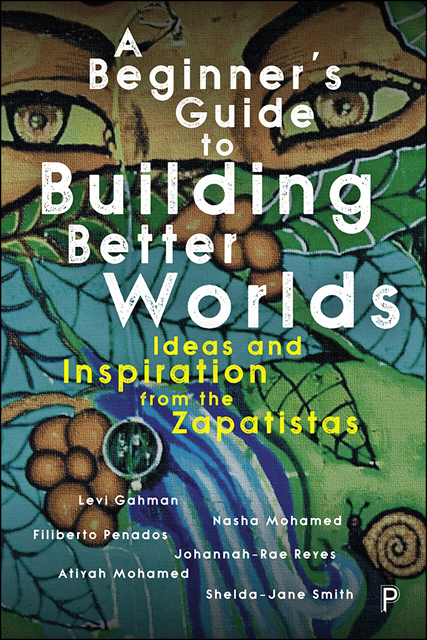Book contents
- Frontmatter
- Dedication
- Contents
- List of figures
- Guilty parties
- 1 Introduction: from liberal bystanding to emancipatory praxis
- 2 A world where many worlds fit
- 3 The coloniser’s model/neoliberal state of the world
- 4 Modernity-coloniality and Indigenous realities
- 5 Dispossession, extractivism and violence
- 6 Critical consciousness and praxis
- 7 Political education and radical pedagogy
- 8 Gender justice and social reproduction
- 9 Health, food sovereignty, solidarity economies
- 10 A battle for the soul of education
- Notes
- References
- Index
7 - Political education and radical pedagogy
Published online by Cambridge University Press: 13 October 2022
- Frontmatter
- Dedication
- Contents
- List of figures
- Guilty parties
- 1 Introduction: from liberal bystanding to emancipatory praxis
- 2 A world where many worlds fit
- 3 The coloniser’s model/neoliberal state of the world
- 4 Modernity-coloniality and Indigenous realities
- 5 Dispossession, extractivism and violence
- 6 Critical consciousness and praxis
- 7 Political education and radical pedagogy
- 8 Gender justice and social reproduction
- 9 Health, food sovereignty, solidarity economies
- 10 A battle for the soul of education
- Notes
- References
- Index
Summary
If you could go to all those corners of our moribund planet, what would you do? Well, we don't know what you’d do, but we Zapatistas, nosotros, nosotras, nosotroas would go to learn. To dance, too, of course, but we don't think the two are mutually exclusive.
EZLN (2020)A fire in the master's house is set
The namesake of the Zapatistas and the Zapatista Army of National Liberation (Ejército Zapatista de Liberación Nacional, EZLN) calls back to Emiliano Zapata (Marcos and de Leon, 2002), the agrarian revolutionary who organised and led the Liberation Army of the South's peasant struggle under the rallying cry ‘¡Tierra y libertad!’ (‘Land and freedom!’) during the Mexican Revolution (1910– 20). The emergence of the contemporary Zapatista communities (comprised of rural Indigenous villages, bases of support and autonomous municipalities), and the EZLN (their army) dates back to 17 November 1983. The EZLN is an armed politico-military organisation inclusive of a hierarchy, strict rules, disciplined training and prepared insurgents. It is guided by Clandestine Revolutionary Indigenous Committees (CCRIs) – a group of appointed delegates and elders that direct the EZLN, but only after participatory consultation with Zapatista communities.
The EZLN is distinct from the more horizontalist Zapatista communities and movement-at-large, yet is comprised of freely associating volunteers, put in the service of collective self-defence, and fighting to eventually put down their weapons, that is, ‘for peace’. While internally the EZLN is not democratic, its general command is. That is, the EZLN receives its ‘marching orders’ from Zapatista communities. In late 1983, a handful, six, as most accounts report, university-educated militants with connections to members of the Las Fuerzas de Liberación Nacional (FLN) journeyed into the Lacandon Jungle of Chiapas, which is Mexico's most impoverished state, to establish a guerrilla vanguard to fight for and bring about a socialist future (Ramírez and Carlsen, 2008). This is largely seen as the genesis of the EZLN.
On arriving in the jungle and ‘mountains of the Mexican southeast’, their efforts, which were being supported by an intricate network of sympathisers with links to dissident Marxists, liberation theologists and proletarian socialists, were subsequently transformed by the Indigenous (largely Maya) communities, culture and cosmovisión (worldview) they encountered.
- Type
- Chapter
- Information
- A Beginner’s Guide to Building Better WorldsIdeas and Inspiration from the Zapatistas, pp. 84 - 105Publisher: Bristol University PressPrint publication year: 2022



